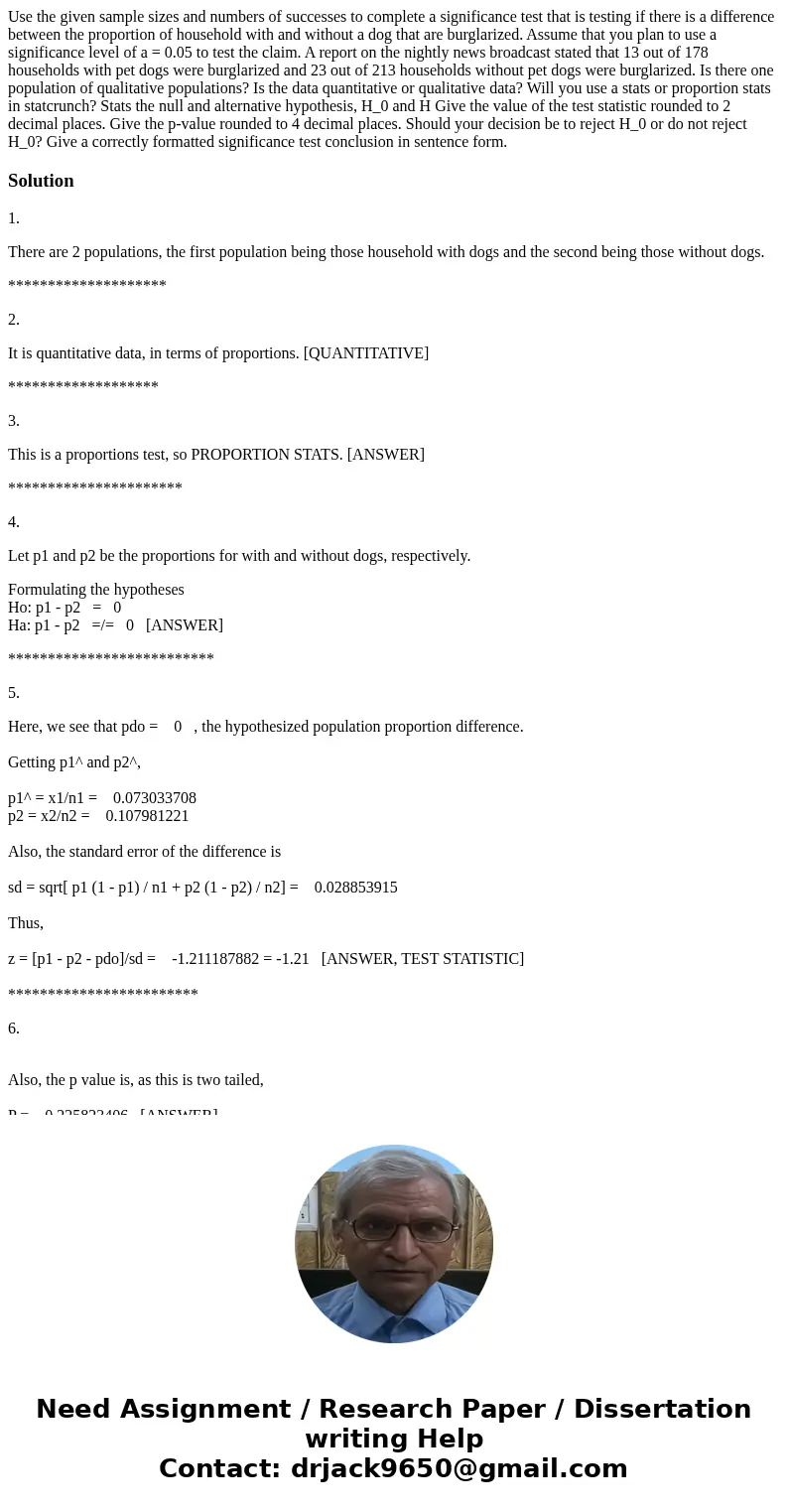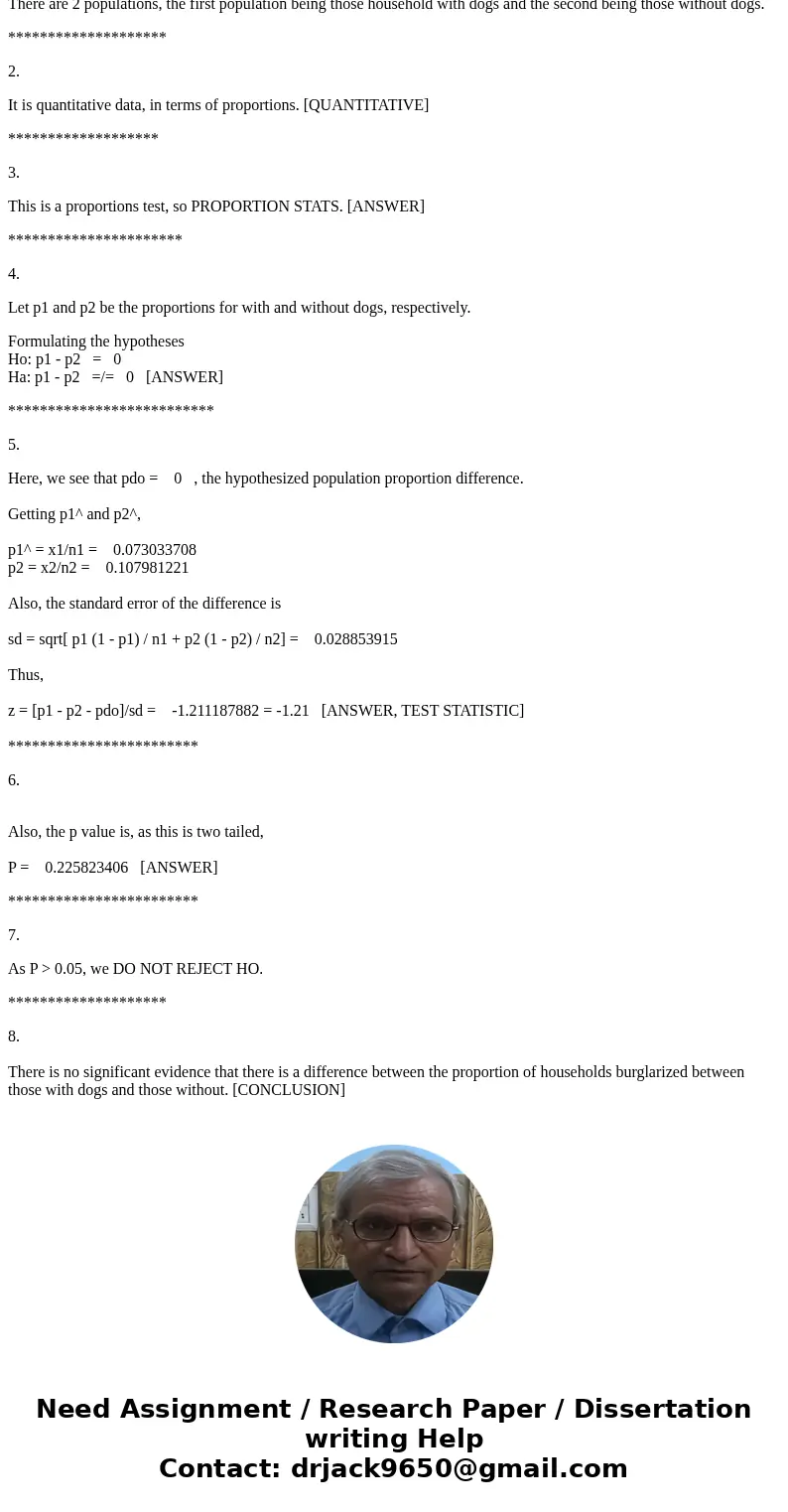Use the given sample sizes and numbers of successes to compl
Solution
1.
There are 2 populations, the first population being those household with dogs and the second being those without dogs.
********************
2.
It is quantitative data, in terms of proportions. [QUANTITATIVE]
*******************
3.
This is a proportions test, so PROPORTION STATS. [ANSWER]
**********************
4.
Let p1 and p2 be the proportions for with and without dogs, respectively.
Formulating the hypotheses
Ho: p1 - p2 = 0
Ha: p1 - p2 =/= 0 [ANSWER]
**************************
5.
Here, we see that pdo = 0 , the hypothesized population proportion difference.
Getting p1^ and p2^,
p1^ = x1/n1 = 0.073033708
p2 = x2/n2 = 0.107981221
Also, the standard error of the difference is
sd = sqrt[ p1 (1 - p1) / n1 + p2 (1 - p2) / n2] = 0.028853915
Thus,
z = [p1 - p2 - pdo]/sd = -1.211187882 = -1.21 [ANSWER, TEST STATISTIC]
************************
6.
Also, the p value is, as this is two tailed,
P = 0.225823406 [ANSWER]
************************
7.
As P > 0.05, we DO NOT REJECT HO.
********************
8.
There is no significant evidence that there is a difference between the proportion of households burglarized between those with dogs and those without. [CONCLUSION]


 Homework Sourse
Homework Sourse